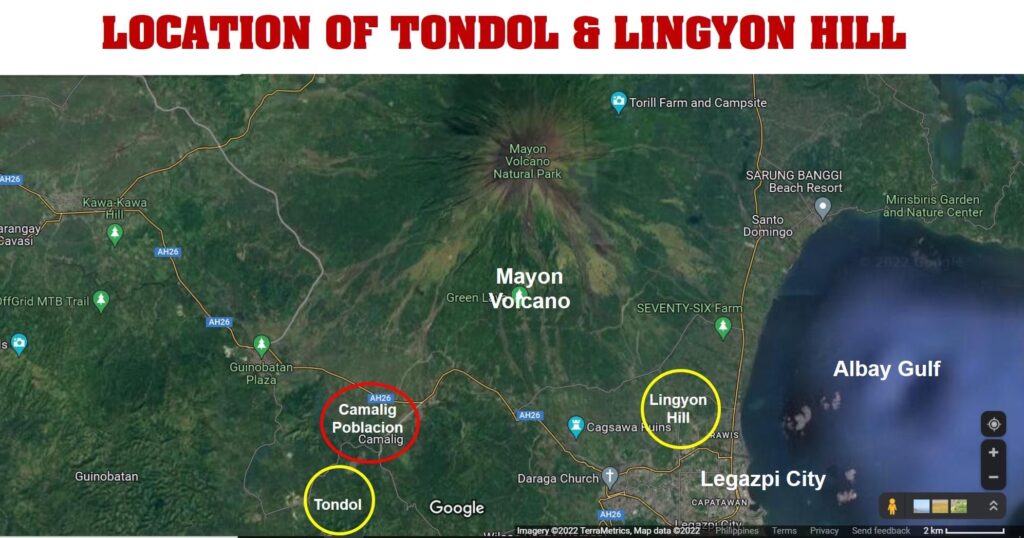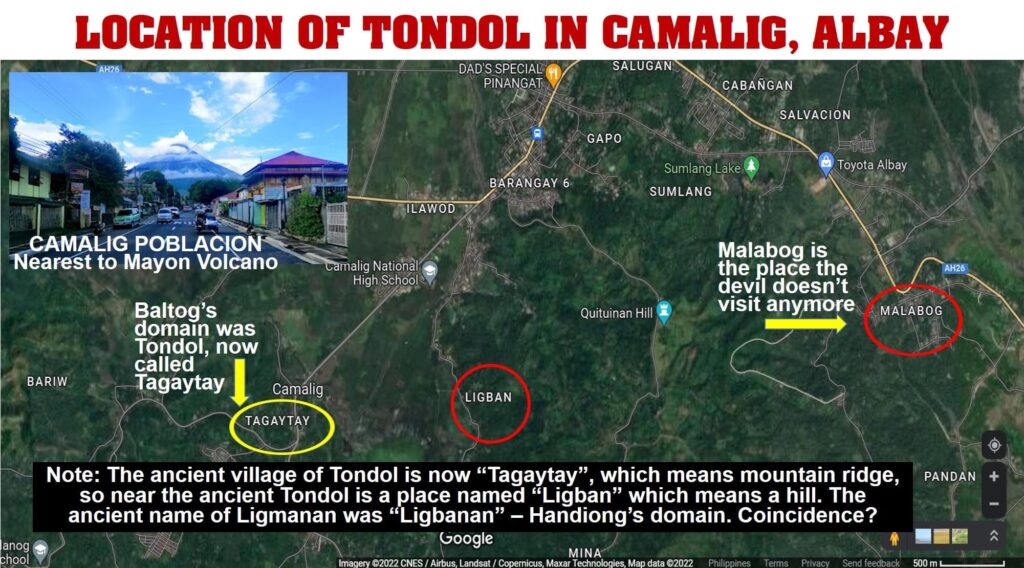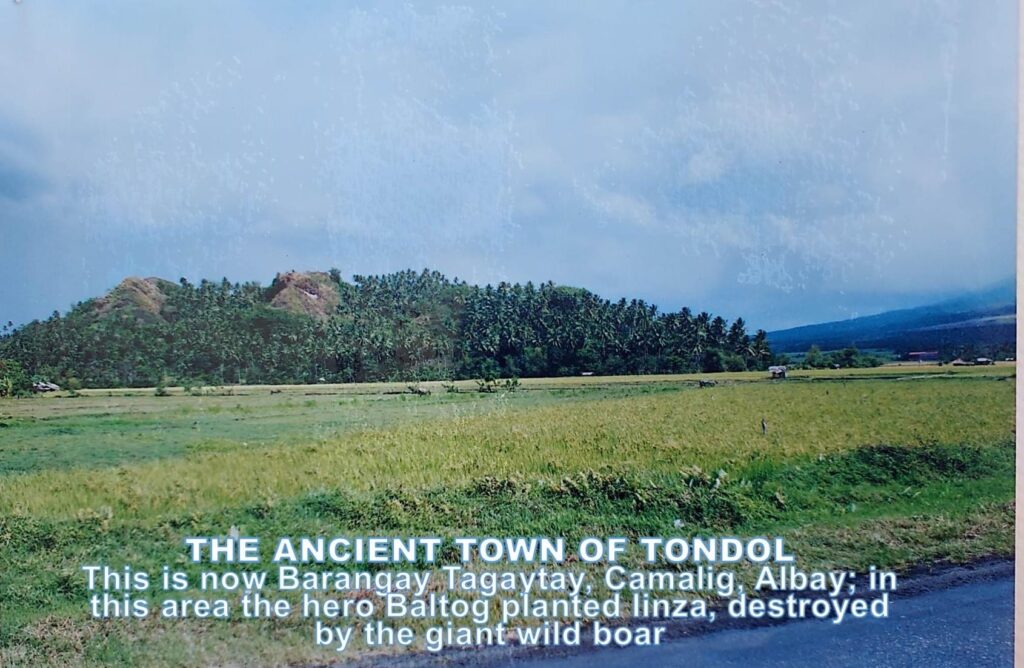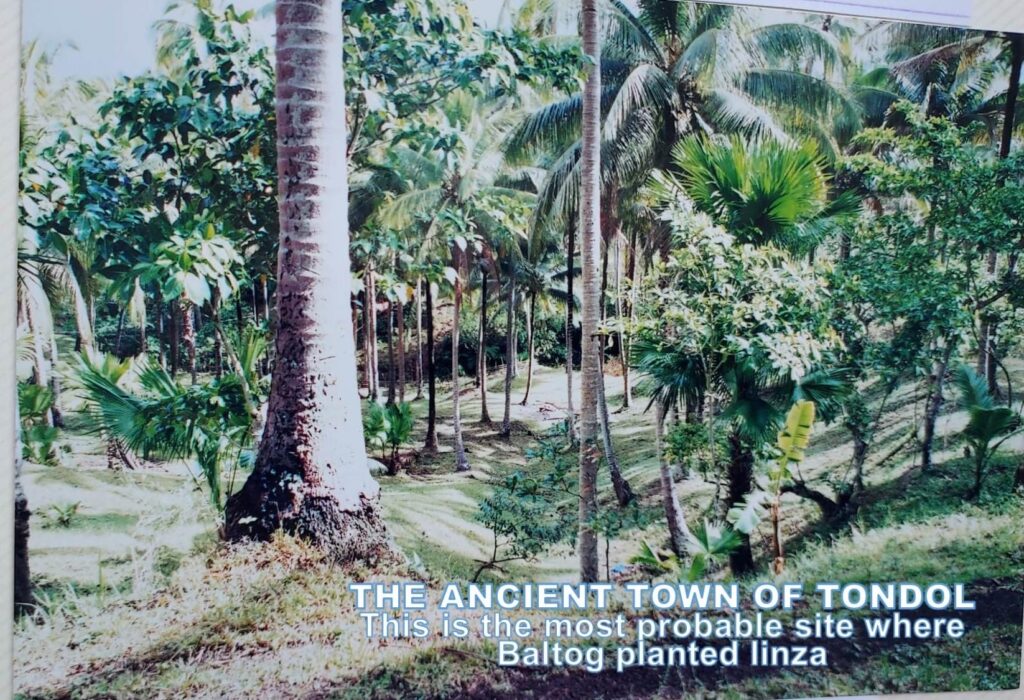By Abdon M. Balde Jr.
TO THE ANCIENT VILLAGE OF TONDOL
During the latter part of my research, I decided to look for the Ibalong sites near Albay. I searched for the ancient village of Tondol, where according to the Ibalong narrative Baltog planted linza. In a night of rage, a giant wild boar destroyed his plantation. So Baltog scoured the area to hunt for the giant boar until he caught and cornered it. It was indeed a giant boar—its jawbones was the length of both his arms when extended and its curling tusks were two-thirds of the shaft length of his lance. Yet, he threw his lance to the ground and faced the boar bare handed. He wrestled with the giant boar and broke its jaws. He detached the jawbones of the boar, went home to Tondol and hang it on the branch of a large talisay tree for all to see. Old hunters from as far as Panikwason and Asog were awestruck to see such a hideous and huge monster, which they called the Tandayag na Opon. They said that they saw such monster in Lingyon Hill.
I first learned about Baltog and Tondol over 57 years ago—in 1965 when I illustrated the narrative of Prof. Merito Espinas about how Baltog slayed the Tandayag na Opon. He published it in the Legazpinian, the college paper of Legazpi College. I rendered a pen and ink drawing of Baltog wrestling the giant boar. “An Tondol, Dong, ay Tagaytay na ngonian na nasa Camalig.” Tondol, Dong (he used to call me Dong) is now Tagaytay in Camalig, Albay, was his reply to my inquiry about Tondol. There is a sitio Tondo in Camalig, but he insisted that it was Tagaytay.
Thus, in 2005 I requested my writer friend from Camalig, Raffi Banzuela to accompany me in searching for the place where Baltog might have planted linza. Linza is a tuber, which belongs to the taro family—almost the same plant which leaves the town of Camalig is famous for making pinangat. Pinangat is a delicacy made of dried fish and a lot of sili wrapped in taro leaves and slow-cooked overnight in earthen pots.
Camalig is the town in Albay which poblacion is nearest Mayon Volcano. The town center was once relocated several times due to the repeated devastation brought about by the eruptions of Mayon Volcano.
In the early Spanish cartography the town was known as “El Pueblo de Camarines”. It was alleged that when the troops of Don Luis de Guzman reached Gibalong in 1569 some of his men continued to explore the inlands and some of them reached a place of wide rice plantations and their grains and tools were stocked in small huts or granaries they called “Camalig”—thus the name Camalig. Fray Marcos de Lisboa who was assigned to the area in 1600 wrote the meaning of “camalig” in his Vocabulario de la lengua Vicol thus: “un pueblo de esta provincial de Camaries, que se llamaba Camalig, donde tomo el nombre de Camarines, esta provincia.” In translation: a town of this province of Camarines called Camalig where the name of this province Camarines, is derived. In April 3, 1574 the whole province was assigned by General Guido de Lavezares as an encomienda under Juan Guerra. Camalig became the cabesera of the Catholic evangelization which started in 1578. Its first visita was the town of Cagsawa—which was totally destroyed by the eruption of Mayon Volcano in 1814.
I drove my van with only Raffi Banzuela as my passenger until we reach the place named Tagaytay. It was a few kilometres from the poblacion, past level fields planted with rice, past a railroad track, until we enter the hilly area with a twin hill still lush with vegetation and coconut trees. We went up a hilly area and aske around for direction. We walked on top of a ridge and looked down to the valleys now planted with coconuts, cacao, wild bananas and other plants. From there I imagined myself as one of the men of Baltog living on tree houses and watching the underlying plains. I think at the time I was able to situate myself properly in order to be able to write authoritatively the missing segments in the life of Baltog and his men.




